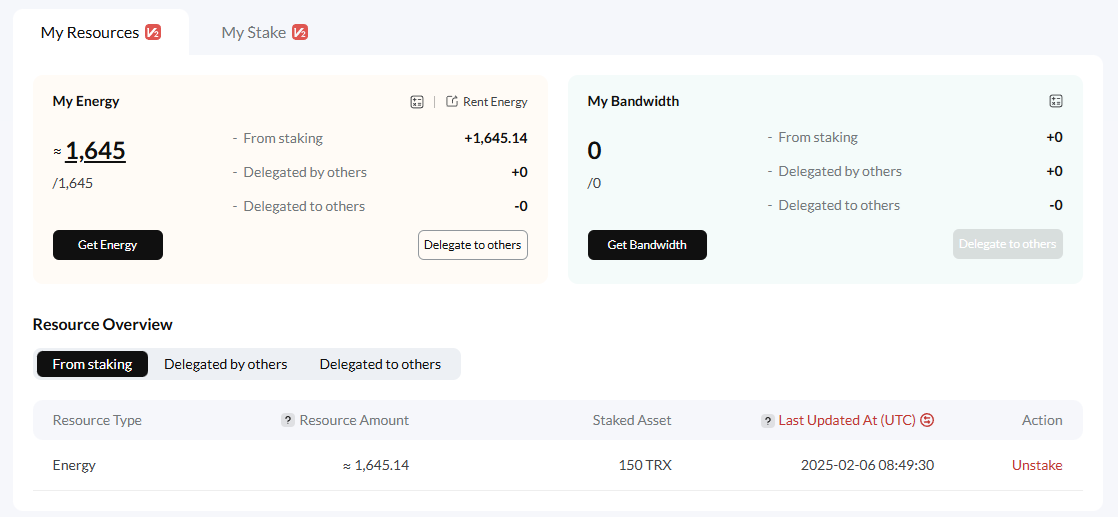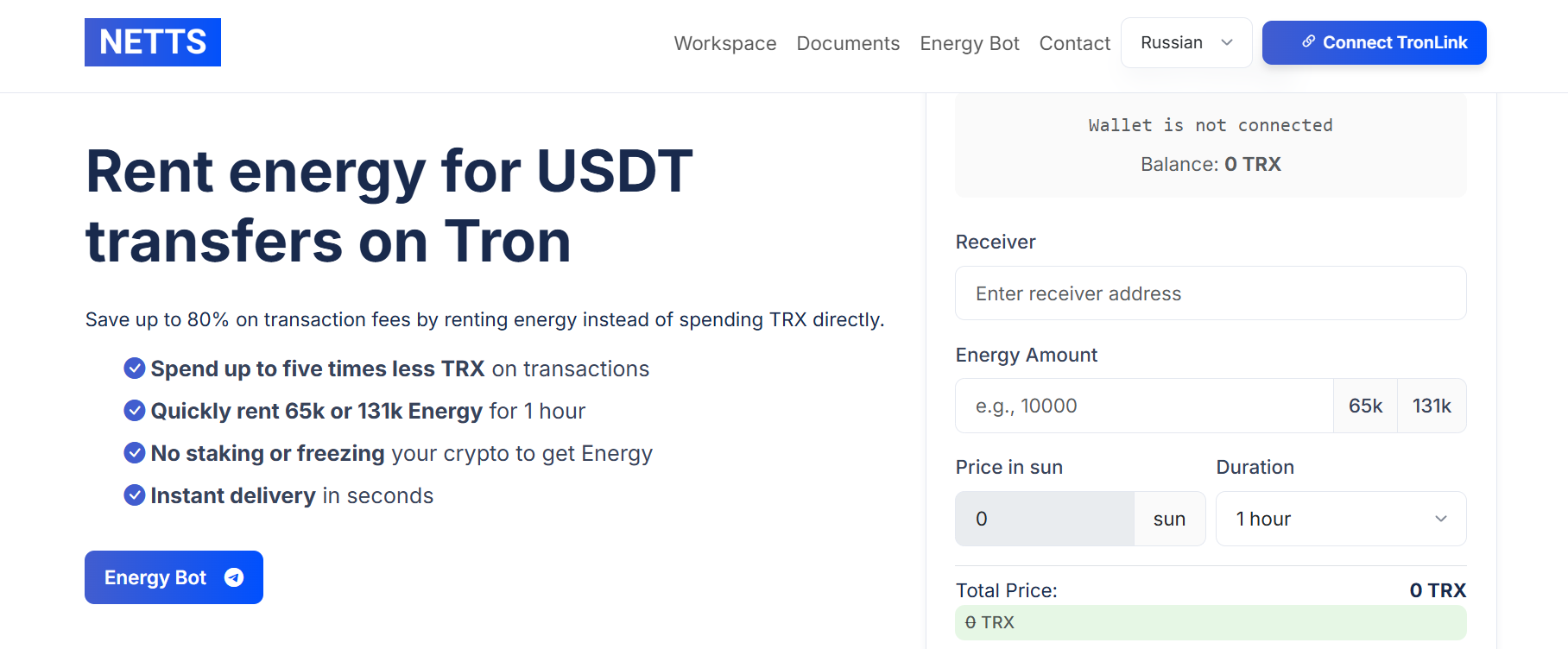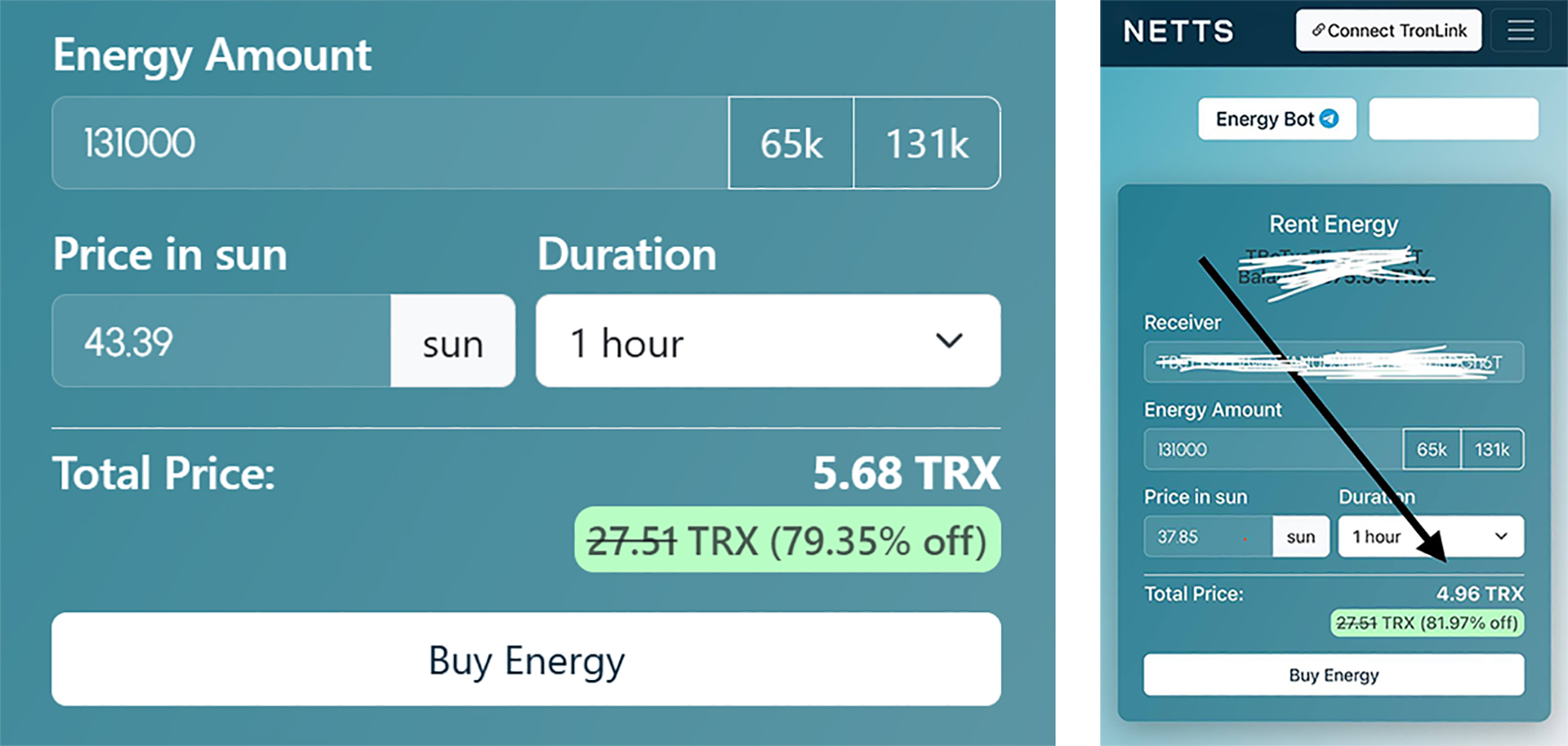Cómo maximizar las reducciones de comisiones para transferencias USDT
USDT TRC-20 es la stablecoin más popular en la red Tron, atrayendo usuarios con sus bajas comisiones y altas velocidades de transacción. Sin embargo, no todos saben cómo ahorrar aún más en las transferencias.

Este artículo detallará cómo maximizar las reducciones de comisiones al transferir USDT TRC-20 utilizando varios métodos y estrategias.
¿Qué es USDT TRC-20 y por qué es importante?
USDT TRC-20 es un token estándar TRC-20 emitido en la cadena de bloques Tron y vinculado al dólar estadounidense (1 USDT = 1 USD). Permite a los usuarios realizar transacciones rápidas y económicas en todo el mundo.
Puntos de Energía y Ancho de Banda
Dos recursos principales se utilizan para realizar transacciones en la red Tron:
- Energy: Required for executing smart contracts, including USDT TRC-20 transfers. If a user has insufficient Energy, TRX will be burned to pay the fee.
- Bandwidth Points: Used for all types of transactions, including TRX and TRC-10 token transfers. Each account receives 600 free Bandwidth units daily. A USDT transfer typically requires about 345 Bandwidth units.

Una escasez de estos recursos lleva a que el sistema deduzca automáticamente TRX de su saldo para cubrir los gastos, lo que puede ser significativamente más caro.
Estrategias Clave para Reducir Comisiones
Existen varios métodos efectivos para minimizar los costos de comisión al trabajar con USDT TRC-20.
1. Usando Energía en lugar de quemar TRX
Esta es la principal forma de ahorrar. En lugar de permitir que el sistema queme sus TRX, puede "congelar" (apostar) TRX para obtener Energía.
- How it works: By freezing TRX, you receive Energy that can be used to pay for transactions. After unfreezing, the TRX is returned to your balance.
- Advantages: Significant fee reduction, as using Energy is cheaper than burning TRX.
- Disadvantages: TRX will be frozen and unavailable for other operations during the staking period (minimum 14 days after the last staking or vote acquisition). The amount of Energy received depends on the total amount of TRX frozen in the network.
Ejemplo: One USDT TRC-20 transfer to an address that already holds USDT requires approximately 32,000 - 65,000 Energy. If the recipient's address does not have USDT, it will require about 65,000 - 131,000 Energy. If you have no Energy, burning TRX will cost approximately 13.86 TRX (for an address without USDT) or 6.93 TRX (for an address with USDT) at current prices (subject to change).
2. Alquilar Energía
Si no tiene suficientes TRX para congelar o no desea bloquear sus fondos, puede alquilar Energía de otros usuarios o a través de servicios especializados.
- How it works: Services like Netts allow you to rent the required amount of Energy for a specific period (e.g., 1 hour or 1 day). You pay a small fee to the service, which is significantly cheaper than directly burning TRX.
- Advantages:
- Savings up to 70-80%: Renting Energy through Netts can reduce your commission costs several times over.
- Flexibility: You can rent exactly as much Energy as you need, for the period that suits you.
- No TRX freezing: Your TRX remains liquid.
- Example from Netts: Alquilar 131.000 unidades de Energía durante 1 hora para una transferencia USDT TRC-20 a una cartera "vacía" a través del servicio Netts puede costar alrededor de 3-5 TRX, mientras que la quema directa de TRX costaría casi 14 TRX. El ahorro es evidente.

El servicio Netts ofrece una interfaz conveniente a través de su sitio web y bot de Telegram, permitiendo el alquiler de Energía de forma rápida y sencilla. Netts también proporciona soluciones automatizadas para empresas a través de API, permitiendo el alquiler automático de Energía cuando se alcanza un cierto umbral de saldo (modo inteligente) o reposición continua (modo host).
3. Eligiendo los Tiempos de Transacción
La red Tron, como cualquier otra, experimenta períodos de alta y baja congestión.
- How it works: During periods of low activity (e.g., nighttime or weekends UTC), fees may be lower due to less demand for network resources.
- Advantages: Additional small savings.
- Disadvantages: It's not always convenient to adjust to low congestion times. The effect may not be as significant as renting Energy.
- How to check congestion: Use the TronScan block explorer (Data -> Network section) to track current network congestion and Energy consumption.
Consejos adicionales de ahorro
- Check the recipient's balance: If the recipient's wallet already contains USDT, the transaction will require less Energy (about half). If possible, clarify this before sending.
- Group transactions: If you need to send USDT to multiple recipients, try to do so within one session when you have already rented Energy or are sure of its availability. However, each individual transaction will still consume Energy.
- Use wallets with resource management support: Some wallets, like TronLink, allow you to easily track and manage your Energy and Bandwidth.
- Beware of free Energy offers: These can often be fraudulent schemes. Use only trusted rental services.
- Automation for business: If you represent a business and make many transactions, consider integrating with Energy rental services via API, such as Netts. This will automate the process and significantly reduce operational costs.
Conclusión
Reducir las comisiones por transferencias USDT TRC-20 es bastante alcanzable con un enfoque inteligente. Usar Energía (propia o alquilada) en lugar de quemar TRX directamente es el factor clave para el ahorro. Los servicios de alquiler de Energía como Netts ofrecen soluciones convenientes y rentables tanto para usuarios privados como para empresas, permitiendo ahorros de hasta el 80% en comisiones. Elija horarios óptimos para las transacciones y supervise el saldo de sus recursos para que sus transferencias USDT TRC-20 sean lo más eficientes y económicas posible.